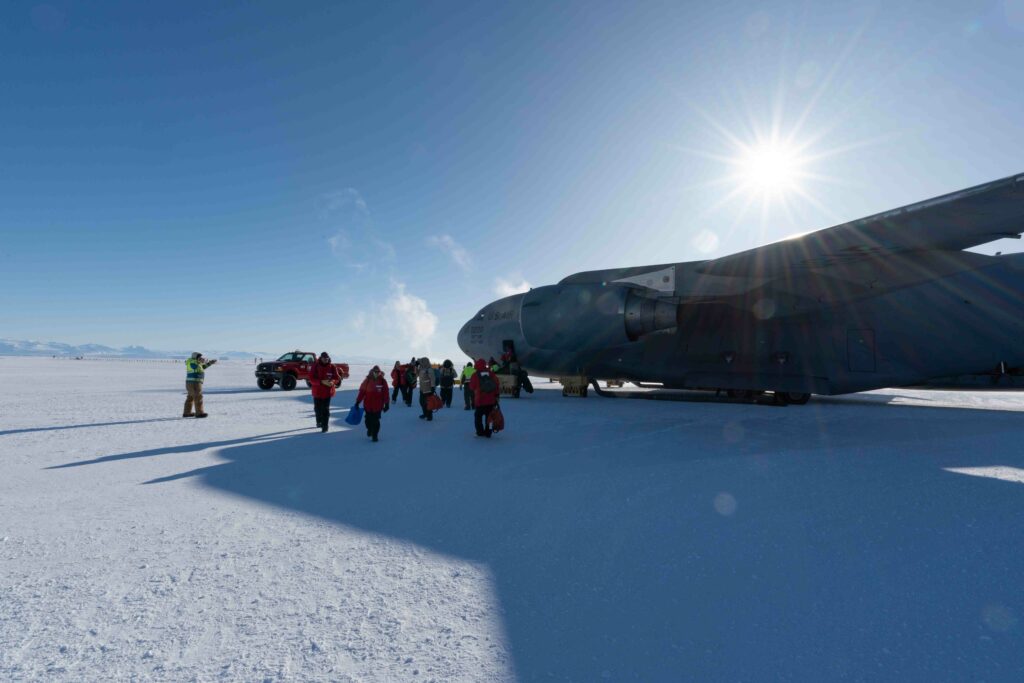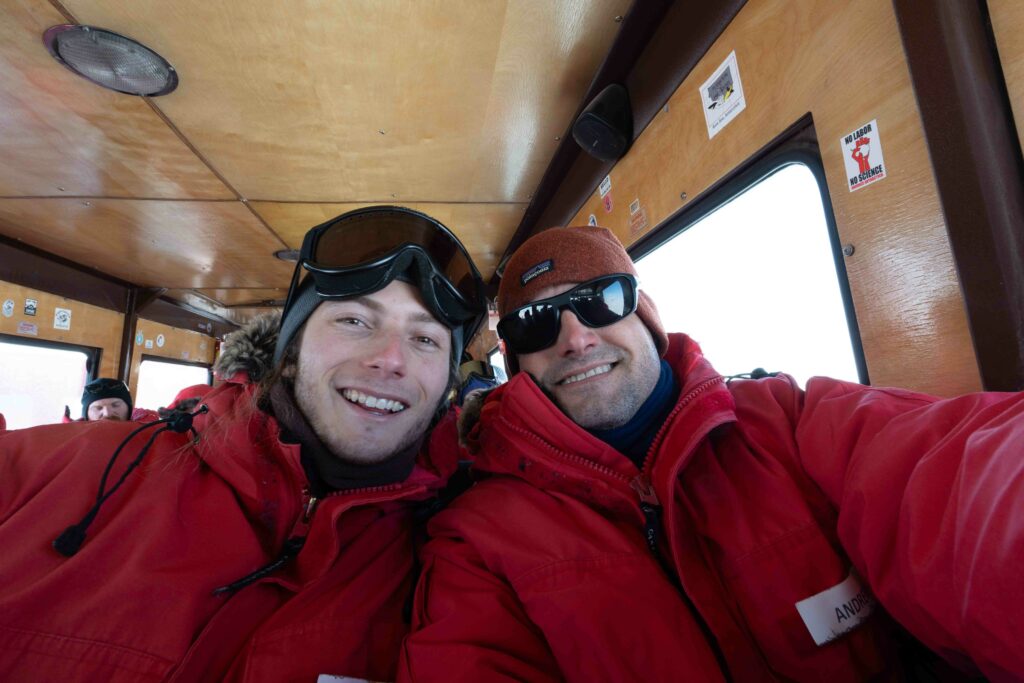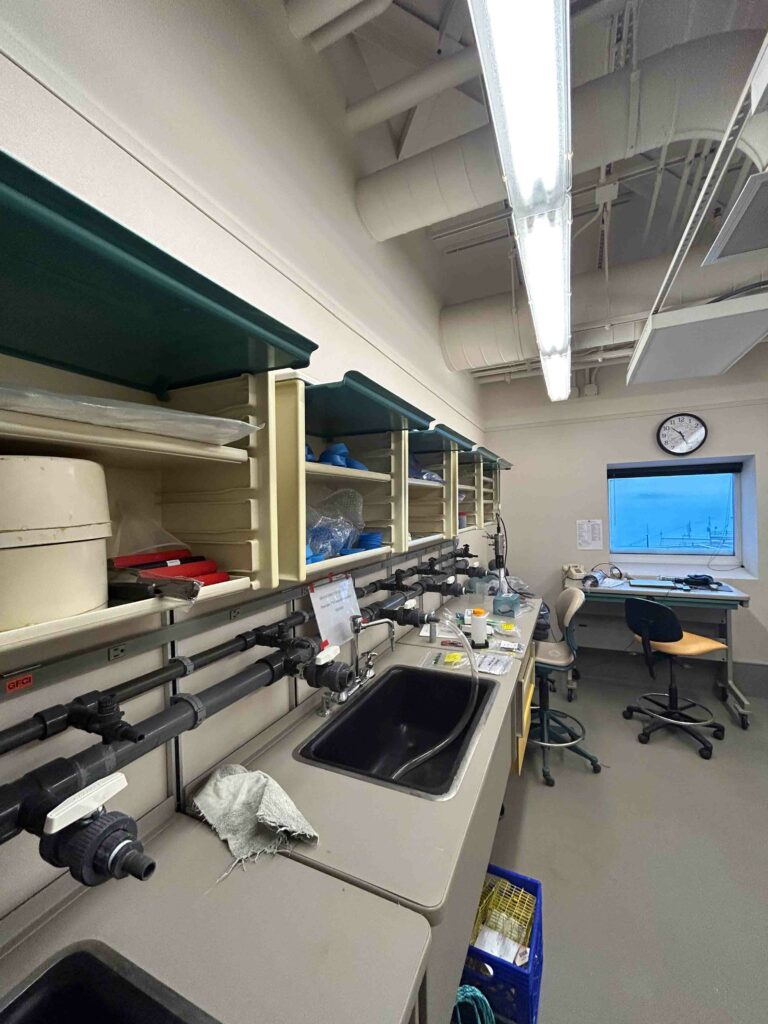As the plane touched ground on the ice and we slid to a stop, we donned our extreme cold weather (ECW) gear with electric excitement. We had landed in Antarctica. The loading port of the plane cracked, and an icy blast of air hit us. It was time to get moving.

Walking off the plane for the first time. The angle of the sun and the flatness of the ice makes shadows long and apparent here (Photo: Andrew Thurber)
We headed off the plane and down the runway in what I can only describe as a state of awe. Ice stretched endlessly, obscured only by untouched mountains and the transport vehicles we were walking to. We hustled onto “Ivan the Terra Bus,” the all-terrain vehicle for transporting first-arrivers and the engines roared to life. We were off to McMurdo.

Andrew and I on “Ivan the Terrabus” heading into McMurdo. Andrew was an expert, naming and describing the features of Antarctica as we drove (Photo: Andrew Thurber)
We arrived at McMurdo and were raring to go. It is an incredible privilege to do science here, and we can’t waste a minute of the time we have down here.

Standing in front of the sea ice is humbling. In this picture, the sun is about as low as it will ever get during our time here (Photo: Isaiah Reeves)
We worked to unpack all of our personal and science supplies that we brought. Clothes were put into dorms, and we headed over to the Crary lab building, the epicenter of Science here in McMurdo.

Boxes of supplies to be unpacked line the halls of the Crary lab building
We unpacked boxes full of science supplies into the lab. Syringes and petri dishes were placed above the bench, sea star cages and sediment corers were brought down to the aquarium room.

Supplies are unpacked in one of our lab spaces. This room has water piped in straight from under the sea ice in McMurdo Sound
Instruments vital to our research such as the cavity ringdown spectrometer, which is used to study methane in the seafloor, was assembled.

Andrew has been working tirelessly to assemble the Picarro instrument
This past week, we have been taking trainings that educate us on the intricacies of conducting research in Antarctica. This includes field safety, sea ice profiling, Pistenbully training and more! All of the trainers have been incredibly knowledgeable and are crucial to a safe field season here.

Michael is profiling the sea ice by probing, drilling, and measuring the thickness at a weak point
I am gearing up to do my first checkout dive tomorrow, to ensure that I can safely work under the sea ice. I am beyond excited to share my experience with you. Until then, we will be working on good science to share with the world.

